When you’re on the hunt for the perfect sheet set to add to your collection, you’ll probably notice that you’re frequently confronted with two words: percale and sateen. And unless you work in the business of bedding, you might not know what those words even mean, let alone how to differentiate between the two! So, allow Sleepopolis to explain.
In this article, we’re going to take a close examination of both percale and sateen woven fabric so that you can be better equipped to find the bedding that’s best for you. Let’s dive into Sateen vs Percale sheets.
Video Review: Percale vs Sateen Sheets – Which Sheets Are Best For You?
Percale VS Sateen: On the Loom
First thing’s first. Both percale and sateen refer to the style of weave used in textile manufacturing; and for the purposes of this guide, we’ll focus specifically on sheets.
While identifying the different characteristics of each weave is most important to understanding how they look and feel, let’s first talk a little bit about the weaving process.
Typically, percale sheets feature a “one-over-one-under” weave, while sateen sheets tend to feature a “three-over-one-under weave.” There are exceptions to every rule, of course, and sometimes you’ll see sateen woven sheets with ‘four-over-one-under’ weaves. But, generally, this is the standard.
Some of you weavers and seamstresses might already know what I mean by “one-over-one-under,” but, essentially, it refers to how the threads of fabric are woven on the loom. To provide a little background, let’s start with understanding the terms “warp” and “weft.”

“Warp” refers to the threads that are held lengthwise on the loom, and “weft” refers to the threads that get woven into the warp threads. For example, a one-over-one-under weave (like we often see in percale sheets) means that the weft thread passes over one warp thread and then under one warp thread. Similarly, a four-over-one-under weave (like we see in sateen sheets) is when the weft thread is woven over four threads before passing under one.
The simplicity of the one-over-one-under percale weave creates a fabric that is lighter and more airy than sateen woven fabric. With a sateen weave, the weft threads pass over more warp threads instead of evenly distributing them like percale’s one weave up/one weave down style. This creates a material that feels smoother, and looks shinier (sort of like satin).
Depending on which technique is used, you’ll notice certain characteristics that are specific to each style of weave. In fact, after this article, I bet you’ll be able to spot these different weaves from across the bedroom. So, now that we know a bit more about the mechanics behind it all, let’s get into those characteristics!
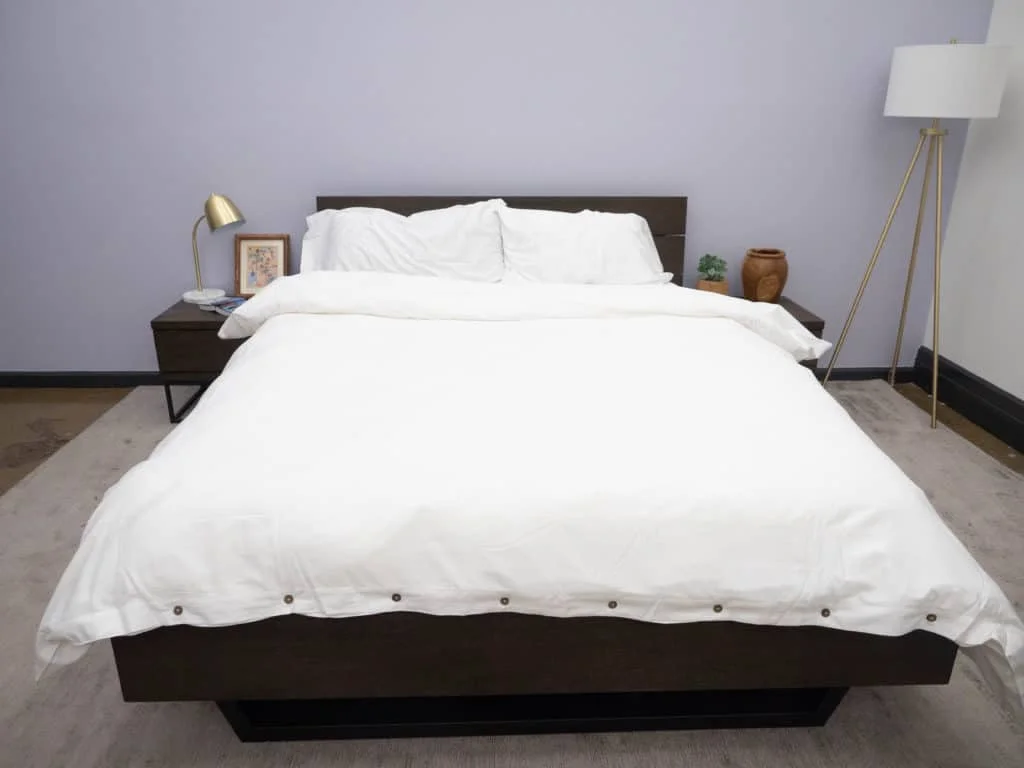
PERCALE
Percale sheets are simpler in weave, characterized by a matte finish, and a crisp handfeel. Percale sheets tend to be lighter in weight, cooler and more breathable. They tend to have that white-button-down-shirt kind of feel.
Because of their cool-crispness and breathability, percale sheets are usually better suited to the warmer months when sleepers are trying to stay fresh and stave off those night sweats. For instance, the percale sheet set from Parachute, or Casper’s Cool Supima sheet set are two good examples of the cooling ability of a percale weave. Sleepers who always run hot (like me) should feel free to use percale sheets year-round.
Of course, a lot about the feel and quality of bedding comes down to the fibers of the fabric itself, but generally, percale sheets are durable, soft, and easy to care for. However, percale sheets are also more prone to wrinkling, so it’s a good thing they’re usually machine dryable as applying heat can help shake the wrinkles out.
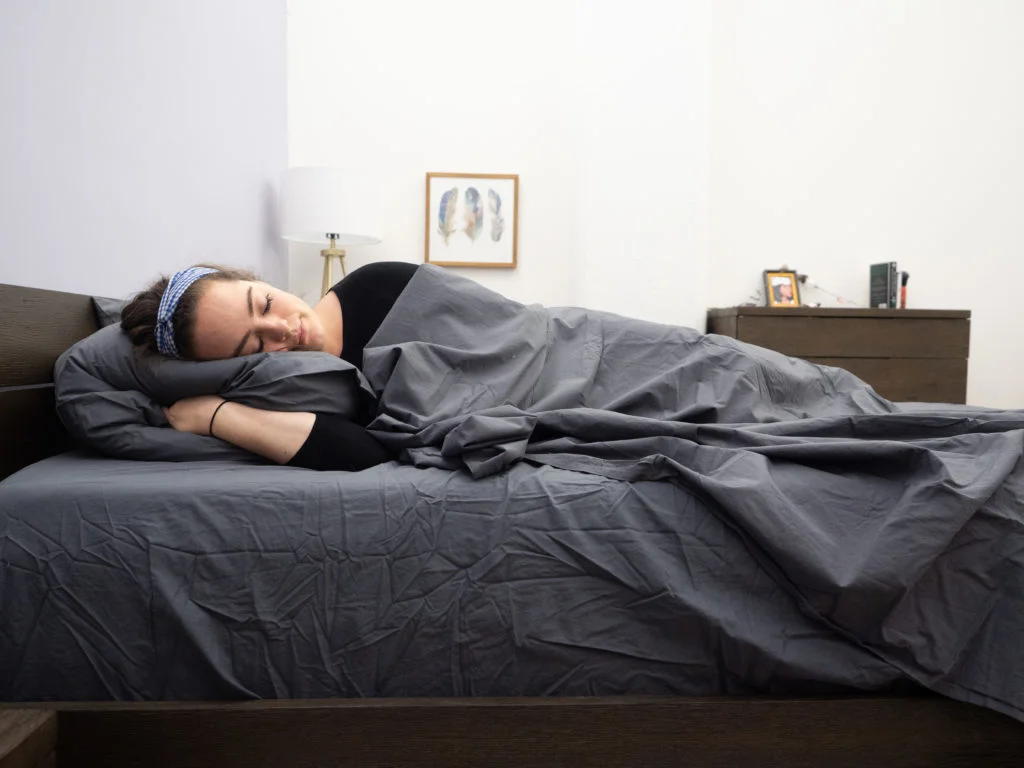
Pro Tip: To keep wrinkles at bay, I recommend removing percale sheets from the dryer as soon as the cycle has finished. Then, spread them out over your mattress when they’re still good and warm.
In addition to getting a little wrinkly, these sheets get a little crinkly too. Percale sheets are so crisp, they can make a bit of a crinkling sound when you roll around in bed or press into the fabric. Personally, I’m a very deep sleeper, so the crinkling of fabric is probably not going to keep me up at night; but if you’re a light sleeper or are sensitive to nighttime noises, keep this in mind.
As I mentioned, percale sheets have more of a matte appearance, meaning they’re not shiny. If the dream bedding you’ve been fantasizing about looks lustrous and silky, you’re probably imagining sateen woven sheets (which we’ll get to in a moment!)
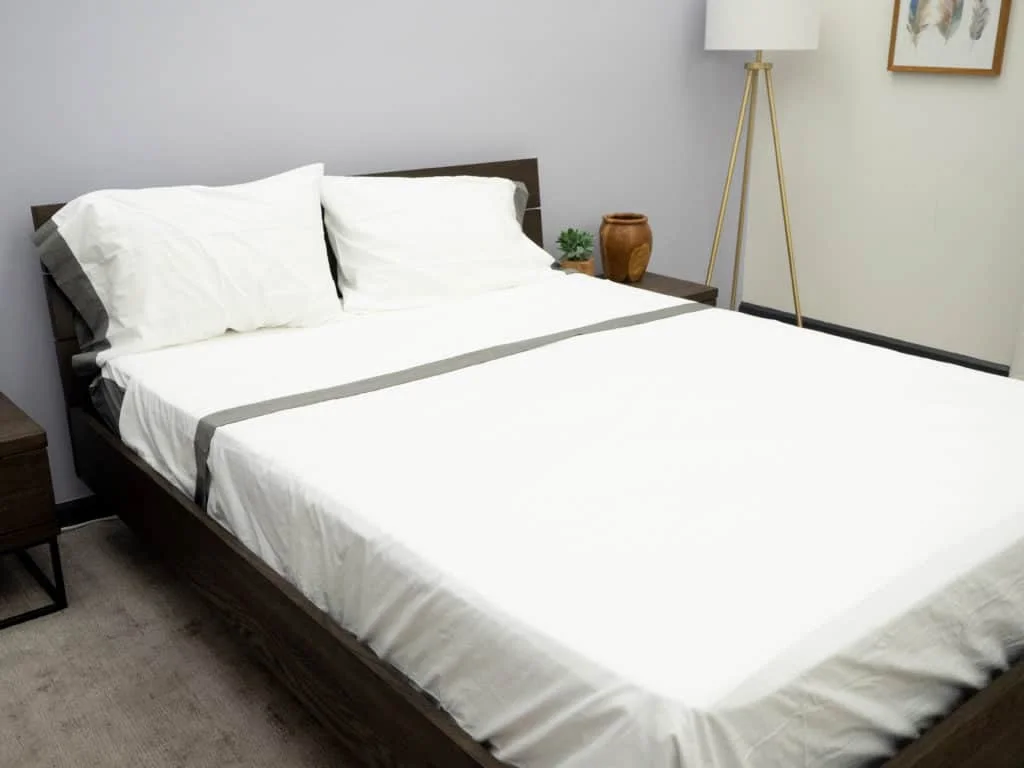
Let’s Recap
Life is busy, and searching for your ideal bedding can sometimes feel more like a chore than anything else. So, how about a little cheat-sheet to refer to when you’re sheet shopping? Here’s a list of keywords you can pretty much always associate with percale bedding:
- Crisp — Think of a white-button-down dress shirt.
- Cool — Percale sheets are typically better suited for the warmer months.
- Lightweight — They are usually lighter in weight than sateen sheets.
- Breathable — Ideal for warm sleepers.
- Matte — Percale sheets are not shiny.
- Durable — Percale sheets are more resistant to pilling.
So, sleepers, when you’re browsing the bedding aisle and you pluck a percale woven sheet set from the shelf, think of these six keywords. More often than not, companies will offer customers a trial period so you can get to know your sheets before fully committing them to your bedroom. But, should you not want to bother with a trial period (or if one isn’t offered), this list should give you a good sense of what you’re getting with percale woven sheets.
Okay! Let’s move onto sateen, shall we?

Sateen
Unlike percale woven sheets, which typically have a matte finish, sateen sheets bear a smoother finish that gives them their signature sheen. They look and feel silky to the touch, and tend to have a lustrous drape that lies a bit heavier on your body. Instead of a cool-crispness, sateen sheets offer a slick, silky smoothness.
A sateen weave does produce a thicker, less breathable sheet than a percale weave does, making sateen sheets well-suited to the cooler months. They aren’t quite as warm and cozy as flannel, but sateen sheets tend to be heavier and warmer than percale sheets. Of course, there are exceptions to every rule! For example, I tested a sateen sheet set from Luxor Linens that did feature the weave’s signature sheen, but also felt pretty lightweight and cool.
Sateen sheets often feature a three-over-one-under weave which results in more visible threads on the top of the fabric. Essentially, this is what causes the finished product to appear silky and lustrous, and feel very smooth to the touch. Additionally, this style of weave makes the fabric less prone to wrinkling (unlike with percale).
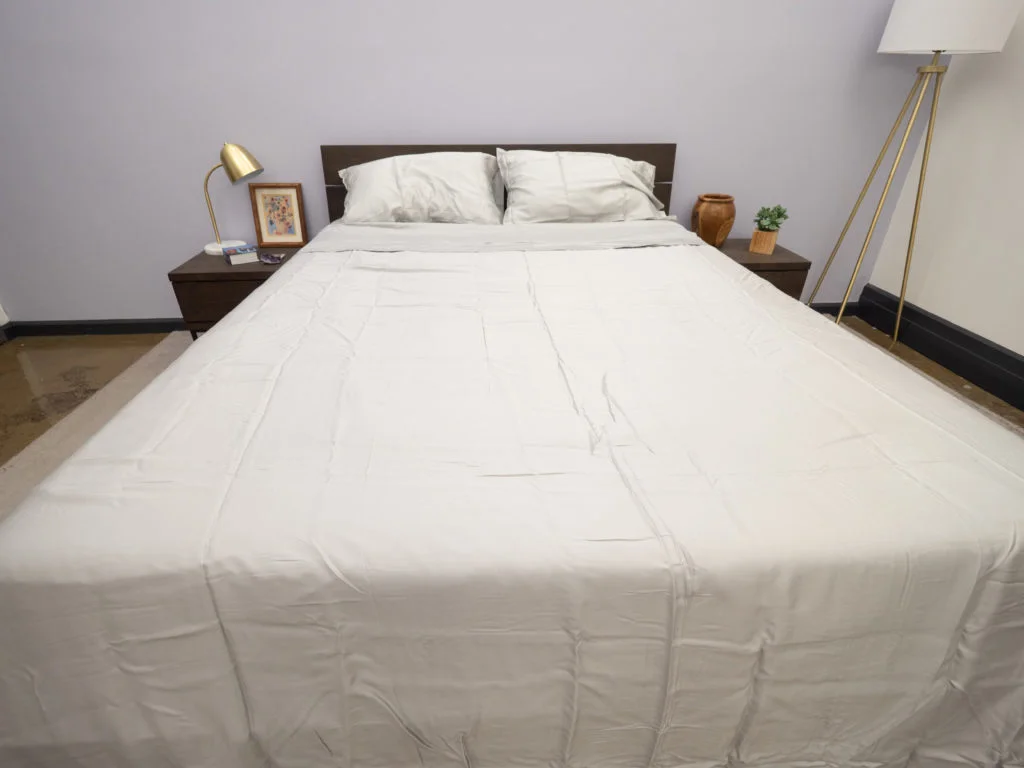
While sateen sheets do tend to wrinkle less, the fabric can sometimes make a swooshing sound when you rub against the material. Like with the crinkling sound that is common in percale, some sateen sheets will be noisier than others. But the silky-slickness of sateen sheets can make for slightly noisy bedding that makes a swish sound when you roll around in bed.
Sateen woven sheets are generally easy to care for, though it’s important to note that the luminous sheen of sateen bedding will diminish with every wash cycle. They are also slightly more prone to pilling, making them a bit less durable than percale woven sheets. So, while the sheen and drape of sateen sheets do offer a luxurious aesthetic, they often don’t last as long.
Let’s Recap
Well, now you know. Percale woven sheets are crisp, cool and breathable, while sateen woven sheets are silky, shiny, and warm. They each bring their own special something to the bedding game, so let’s take a look at some keywords you can associate with sateen sheets to make your shopping a little easier:
- Sheen — Sateen sheets have a lustrous sheen.
- Drape — They lie heavier on the body, outlining your shape.
- Silky — More creamy-smooth like silk or satin.
- Heavy — A sateen weave produces a thicker sheet.
- More wrinkle-resistant — Less wrinkly than percale.
- Warm — This weave is less breathable, better for cool climate.
Remember, sleepers: not every sateen sheet set is going to feel or look the same (who would want that?) But when you’re trying to find the perfect sateen woven bedding to add to your bedroom, keep these six keywords in the back of your mind. Of course, you can almost always make use of a company’s trial period and test some sateen sheets out to get the best sense of how they perform.
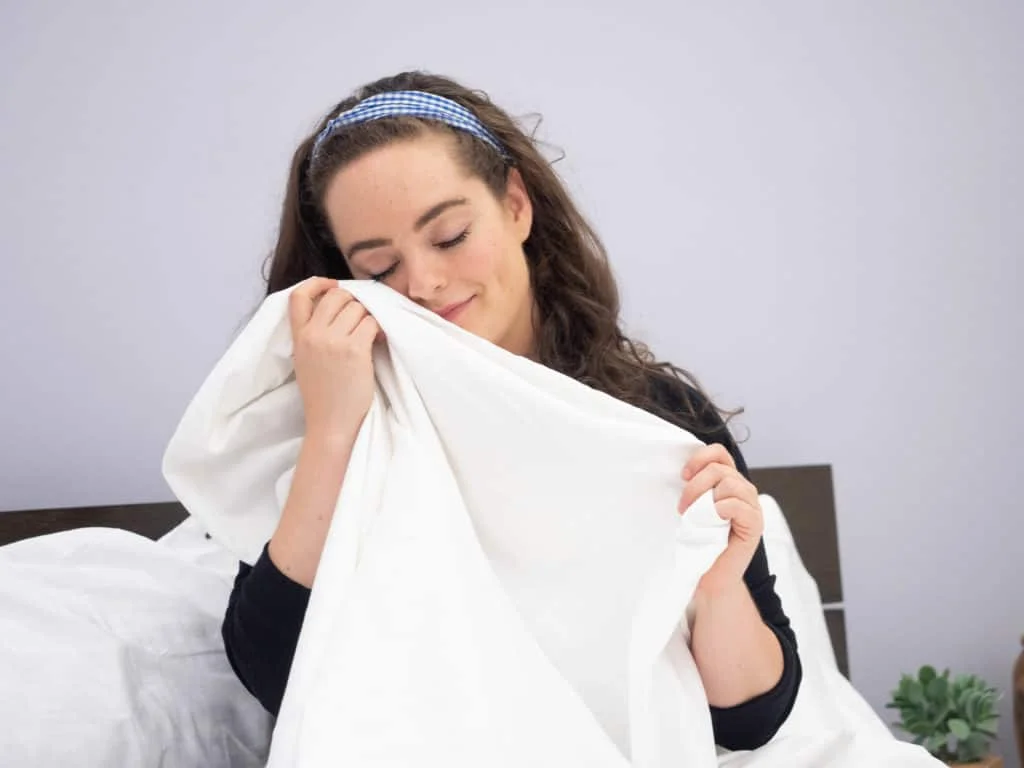
Final Thoughts
Percale and sateen bedding have very different personalities, each bearing their own set of perks and drawbacks. Instead of trying to determine which one you should pick, I recommend testing both styles for a nicely balanced bedding collection. After all, they do complement one another! Enjoy the crisp-coolness of percale in the summertime and the creamy-soft warmth of sateen when the winter rolls in.
So, let’s compare both weaves side by side one more time so you have a firm grasp of each style:
SHOULD YOU BUY PERCALE OR SATEEN SHEETS
- The Look — Percale is characterized by a matte finish, while sateen offers a shiny, glossier appearance.
- The Feel — Percale fabric has a cool, crisp handfeel, and sateen fabric feels silky and smooth.
- The Weight — Percale is lighter and more breathable than sateen; sateen weaves produce a thicker sheet that lies heavier on the body.
- The Warmth — Percale bedding tends to sleep cooler than sateen bedding.
- The Wrinkles — Sateen woven fabric is generally more resistant to wrinkles, while percale woven fabric is more prone to wrinkles.
- The Washing — Typically, both sateen and percale woven fabrics are machine washable and dryable.
So, now you know what these weaves are all about. But if you’re ever wondering about a specific sheet set, it’s a good idea to take advantage of the company’s trial period, as well as check the product’s ratings and reviews. This way, you can have all the information you need to pick the best sheets.
FAQs
Do Percale sheets get softer over time?
Every time you wash Percale sheets, they will get softer. The longer you have them, the softer they tend to get.
What is a Percale sheet?
Percale sheets are a cotton sheet known for their tight weave. The word “percale” refers to the specific type of weave used to produce the sheet and not the material it’s made from.
What makes Sateen sheets a good choice?
Sateen sheets can be a good choice for those who suffer from allergies because they resist mildew. They have a high thread count and are very breathable making them cool to sleep on.


























